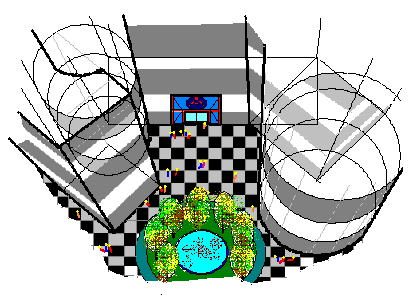|
Shanghai Is Relatively Bubbly
Stephen
Chung Managing Director
Zeppelin
Real Estate Analysis Limited
February 2006
The overall impression one has of Mainland real estate, especially the commodity (private market) residential sector, is that it is by and large on the upper portion of the market cycle, and that there seems to be overly abundant supply in the pricier category which prices in turn seem to be out of step with most of the potential buying pool. In addition, of the various major markets, Shanghai does seem comparatively bubblier than others. Here are a few details for consideration: A) Nationwide, investment into real estate has risen some 22% in 2005 (up to November) = over the same period of 2004 totaling around 1,400,000,000,000 Yuan (8.11 Yuan is roughly US$1.00) in committed funds. The Eastern (seaboard) region commands around 66% of this amount with the rest 37% split equally among the Central and Western regions. However, in terms of investment rate of increase, the latter two regions are 32% each while the Eastern region gains only 18%. Of special note are Beijing and Shanghai, and their investment gains in 2005 are only a few percentage points over 2004. This perhaps reflects the impact of the macro economic measures taken recently to contain excessive real estate price rises and this may also spell financial cash flow challenges to some real estate developers. Financial stringency is in itself not always a bubble buster though the chance of having one particularly in the short to medium term may be increased assuming all things being equal. Such financing stringency may however also curb excessive supply, if there is excessive supply, in the long run.
B) Reliance on pre-sales = overall the capital sources required for real estate come mainly from three, namely 1) bank debt financing, 2) own-equity, and 3) proceeds from presales etc which respectively represent 17%, 34% and 48% plus the remaining 1-2% from foreign funds. Regionally, the Eastern portion reflects this apportionment while the Central and Western regions would have higher equity portions of 50% and 42% respectively thus decreasing the importance of presale proceeds. One may speculate that the Central and Western project developers have either more cash of their own OR that debt financing is harder to come by. Your humble author thinks it is due more to the latter reason and debt financing accounts only some 14% in these two regions. Nonetheless, the interesting point here is that for Beijing and Shanghai, the presale proceeds occupies around 50% or more and equity accounts for around 20% to 27%, i.e. being lower than the national average. Again, reliance on presale proceeds in itself does not automatically spell bubble yet it signals the financial strength of most developers could be less than sustainable without presales.
C) Ratios of ”„built”¦ sales versus ”„pre-completion”¦ sales = we now look at the sale proceed percentage figures here in the 3 different market sectors of residential, office, and retail:
1) Residential = nationwide, the ratio is 30% built versus 70% pre-completion, i.e. 30% of the sale proceeds have to do with completed new units while the remaining 70% have to do with sales proceeds from yet-to-be-completed units, with the Eastern region demonstrating a very close 29% to 71% split. However, the ratio for Shanghai is 12% to 88% i.e. 88% of the sale proceeds have to do with sales of yet-to-be-completed units and this in itself is considered high by most market standards. As a comparison, Beijing has a ratio of 40% to 60%.
2) Office = the nationwide ratio is 31% to 69% with the Eastern region again demonstrating a close one of 30% to 70%. However, Shanghai stands out with a ratio of 16% to 84%. As a benchmark, Beijing has a ratio of 50% to 50%.
3) Retail = the nationwide ratio is 37% to 63% with the Eastern region again demonstrating a similar one of 34% to 66%. However, Shanghai stands out with a ratio of 11% to 89%. Again as a benchmark, Beijing has a ratio of 37% to 63%. While the foregoing is not as exhaustive as one would like, it does point to a possibility that the Shanghai real estate market is by comparison bubblier than most other markets in China, being quite dependent on investment influx and presales proceeds and units. Notes: The article and/or content contained herein are for general reference only and are not meant to substitute for proper professional advice and/or due diligence. The author(s) and Zeppelin, including its staff, associates, consultants, executives and the like do not accept any responsibility or liability for losses, damages, claims and the like arising out of the use or reference to the content contained herein. |
Phone (852) 37576388 Fax (852) 37576399 E-mail contact@real-estate-tech.com
Address c/o Zeppelin, Unit 1007, 10/F, CCT Telecom Building, 11 Wo Shing Street, Shatin, NT, Hong Kong
Copyright rests with Zeppelin and/or relevant authors
